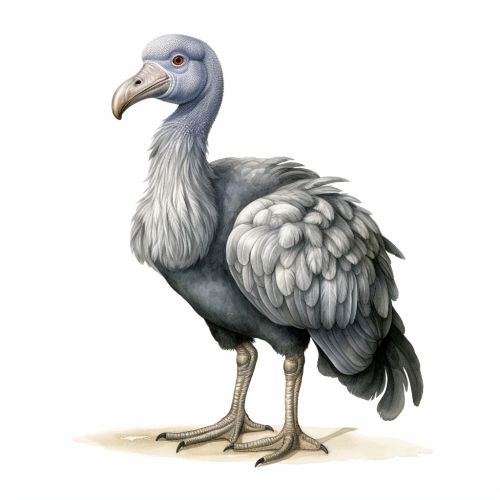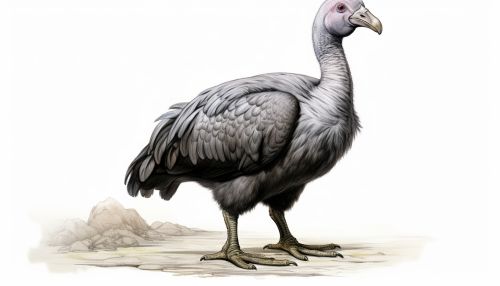Dodo
Introduction
The Dodo (Raphus cucullatus) was a flightless bird endemic to the island of Mauritius, located in the Indian Ocean. The species became extinct in the late 17th century due to a combination of factors, including habitat loss and hunting by humans and introduced species. The Dodo's extinction is one of the most notable examples of the impact of human activity on the world's biodiversity.


Taxonomy and Evolution
The Dodo was a member of the pigeon and dove family Columbidae. It was closely related to the Rodrigues Solitaire (Pezophaps solitaria), another extinct flightless bird that lived on the nearby island of Rodrigues. The Dodo and Rodrigues Solitaire are often placed in a subfamily, Raphinae, to highlight their relationship.
The Dodo's ancestors were likely volant (capable of flight) pigeons that arrived on Mauritius. Over time, these birds evolved into the flightless Dodo, a process known as insular dwarfism. This phenomenon often occurs on islands, where limited resources and the absence of predators allow for the development of unique traits.
Description
The Dodo was a large bird, standing about one meter tall and weighing between 10 and 18 kilograms. It had a large hooked beak, robust legs, and small wings. The plumage was greyish with a lighter underbelly, and the tail was tufted with curly feathers. The Dodo's appearance is known from drawings and written accounts from the 17th century, as well as from the few remaining physical remains.
Behaviour and Ecology
The Dodo was a ground-dwelling bird that likely spent much of its time foraging for food. Its diet consisted primarily of fruits, nuts, and roots. The bird's large beak suggests that it could crack open hard-shelled fruits and nuts. The Dodo's habitat was the coastal and lowland forests of Mauritius.
The Dodo was likely a solitary bird or lived in small groups. It is believed to have nested on the ground, laying a single egg at a time. The Dodo's lack of fear of humans, a trait common in island species, contributed to its rapid extinction.
Extinction
The Dodo became extinct in the late 17th century, less than 100 years after the arrival of humans on Mauritius. The bird's extinction was caused by a combination of factors, including hunting by humans and introduced species such as pigs and monkeys, which preyed on the Dodo's eggs and competed for food resources. The destruction of the Dodo's forest habitat for agriculture also contributed to its demise.
The Dodo's extinction has become a symbol of the destructive impact of human activity on wildlife. It has also spurred efforts to prevent further extinctions and to conserve biodiversity.
Legacy
The Dodo has left a significant legacy in popular culture and science. It is often used as a symbol of extinction and the destructive impact of human activity on the environment. The phrase "dead as a Dodo" is commonly used to signify something that is unquestionably and irreversibly extinct or outdated.
In science, the Dodo has been the subject of significant research. The bird's rapid extinction following human contact has provided valuable insights into the impact of human activity on biodiversity. The Dodo is also a key example in studies of island biogeography and evolutionary biology.
See Also
- Passenger Pigeon - another extinct bird species
- Island of Mauritius - the Dodo's native habitat
- Insular dwarfism - the evolutionary process that led to the Dodo's flightlessness
